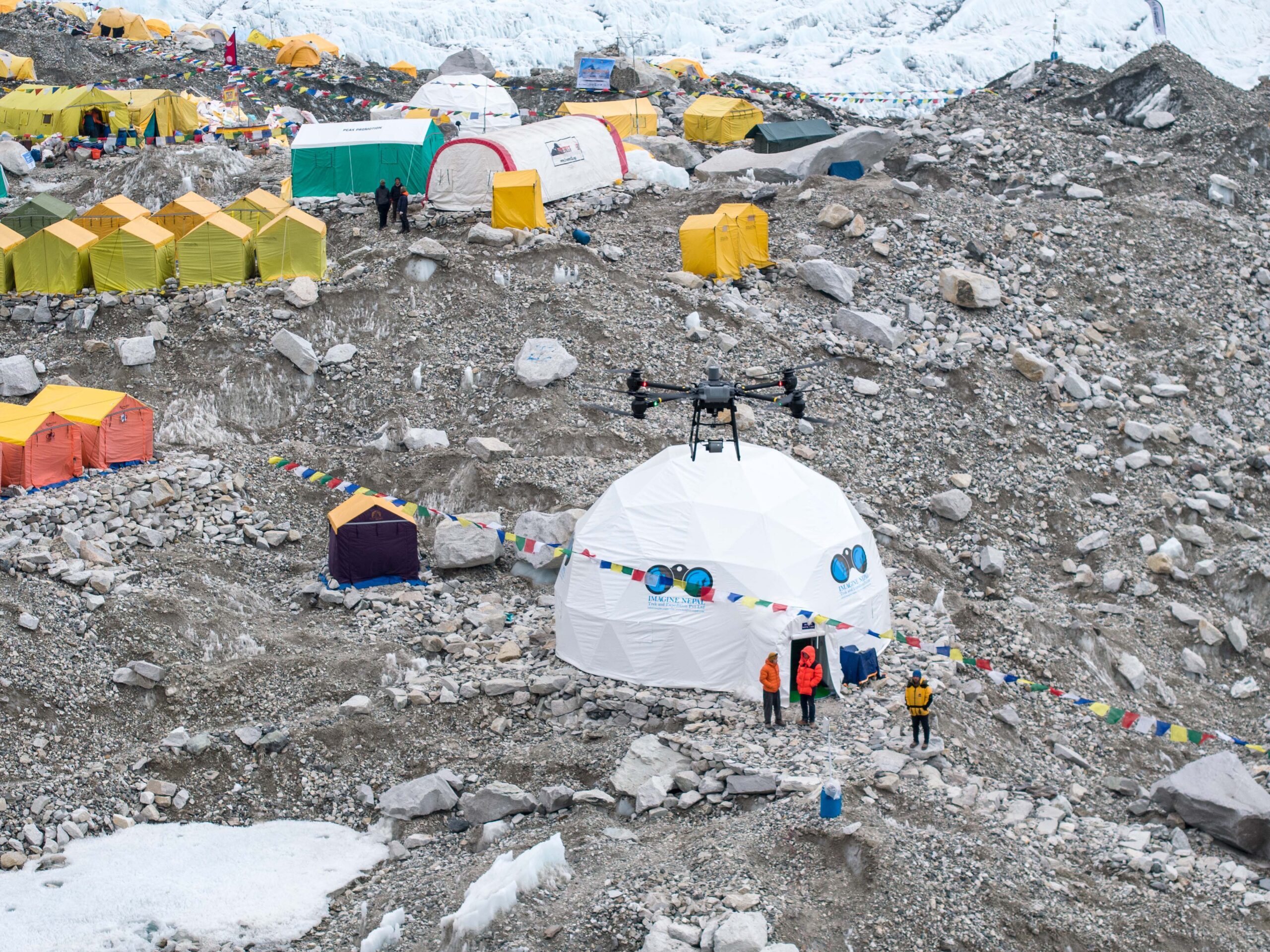Drones to Assist Sherpas in Mount Everest Expeditions
International International NewsPosted by NewAdmin on 2025-03-18 08:43:56 |
Share: Facebook | Twitter | Whatsapp | Linkedin Visits: 29

For the first time, drones will be deployed in Mount Everest expeditions to transport supplies, carry equipment, and remove waste along challenging routes. This initiative aims to reduce the workload of Nepali Sherpas, who have long carried heavy loads through hazardous terrain, and enhance safety for both climbers and workers at high altitudes.
During the upcoming climbing season, expedition companies will begin testing drones that can carry up to 35 pounds. These drones will transport essential gear, retrieve ladders, and remove waste, significantly reducing the time and risk involved in traversing dangerous areas like the Khumbu Icefall. This section, southwest of Everest’s summit, is particularly perilous due to climate change-induced snowmelt and ice instability.
A Nepalese startup, AirLift, has been testing drones donated by the Chinese manufacturer DJI. A successful trial last year saw drones transporting oxygen bottles and supplies between Everest Base Camp and Camp I, as well as bringing trash back down. The drones completed tasks in minutes that would normally take Sherpas several hours. This advancement could benefit the highly skilled “icefall doctors,” Sherpas responsible for installing ladders and ropes across deep crevasses before each climbing season.
The push for drone use gained momentum after a 2023 tragedy in which three Sherpas were killed in an avalanche while fixing ropes. Their bodies could not be recovered due to safety concerns. This incident led expedition leaders to seek alternative solutions for carrying supplies and reducing the risks faced by Sherpas. Inspired by drone usage on China’s Muztagh Ata peak, DJI conducted high-altitude tests in Nepal, demonstrating the drones’ ability to operate in extreme conditions, including low temperatures and high winds.
Drones are expected to make Everest expeditions more sustainable by helping with waste management. Each climber leaves an estimated 8 kg of trash, and traditional cleanup efforts have struggled to keep pace. After a successful test on Mount Ama Dablam, where drones removed 1,300 pounds of waste, authorities are optimistic about their role in keeping Everest cleaner.
Despite the potential benefits, high costs remain a concern. A single DJI drone, including equipment and customs duties, can cost over $70,000. AirLift is exploring local assembly to cut costs by half, making the technology more accessible. Encouraged by the successful trials, the Nepalese government has contracted a local drone service company to begin regular drone deliveries on Everest’s southern slope starting May 22. Globally, DJI’s drones are being used in various industries, from environmental conservation to search and rescue. Their introduction to Everest could mark a turning point in mountaineering, making expeditions safer and more efficient while reducing environmental impact.
Search
Categories
Recent News
- Hyderabad's Biryani Scam: When Food Delivery Meets Fraud
- RBI's UDGAM Portal: Hyderabad's Cyber Fraud Warning
- Hyderabad Gears Up for Presidential Visit: Traffic Advisory Issued
- Hyderabad Crypto Scam: Unraveling a Multi-State Fraud
- Cyber Scams Target Unsuspecting Citizens via RBI Portal
- Telangana's Tech-Driven Policing: Drones Take to the Skies
- RBI Governor Prioritises Digital Security: A Strategic Shift
- Hyderabad's Massive Anti-Drug Operation: 72 Foreigners Deported
Popular News
- Navigating IPO Market Dynamics Amid Volatility and Regulatory Changes
- Innovative Green Practices and Environmental Initiative
- Massive Worldwide Microsoft Outage Disrupts Multiple Sectors
- తెలుగుదేశం పార్టీ - పేదరికాన్ని నిర్మూలించడంలో వాగ్దానం
- Universities Embrace Remote Learning Technologies Amidst Ongoing Pandemic